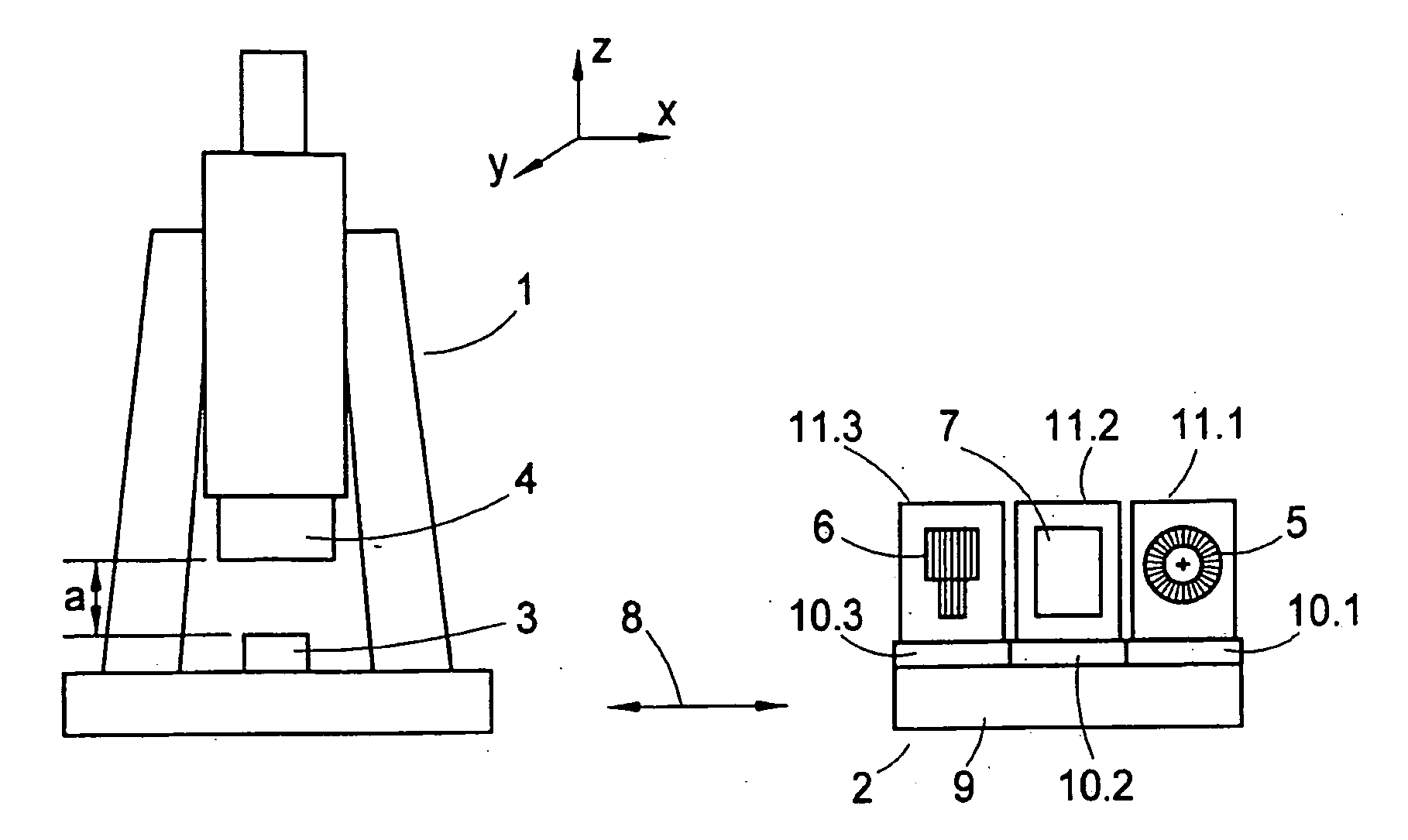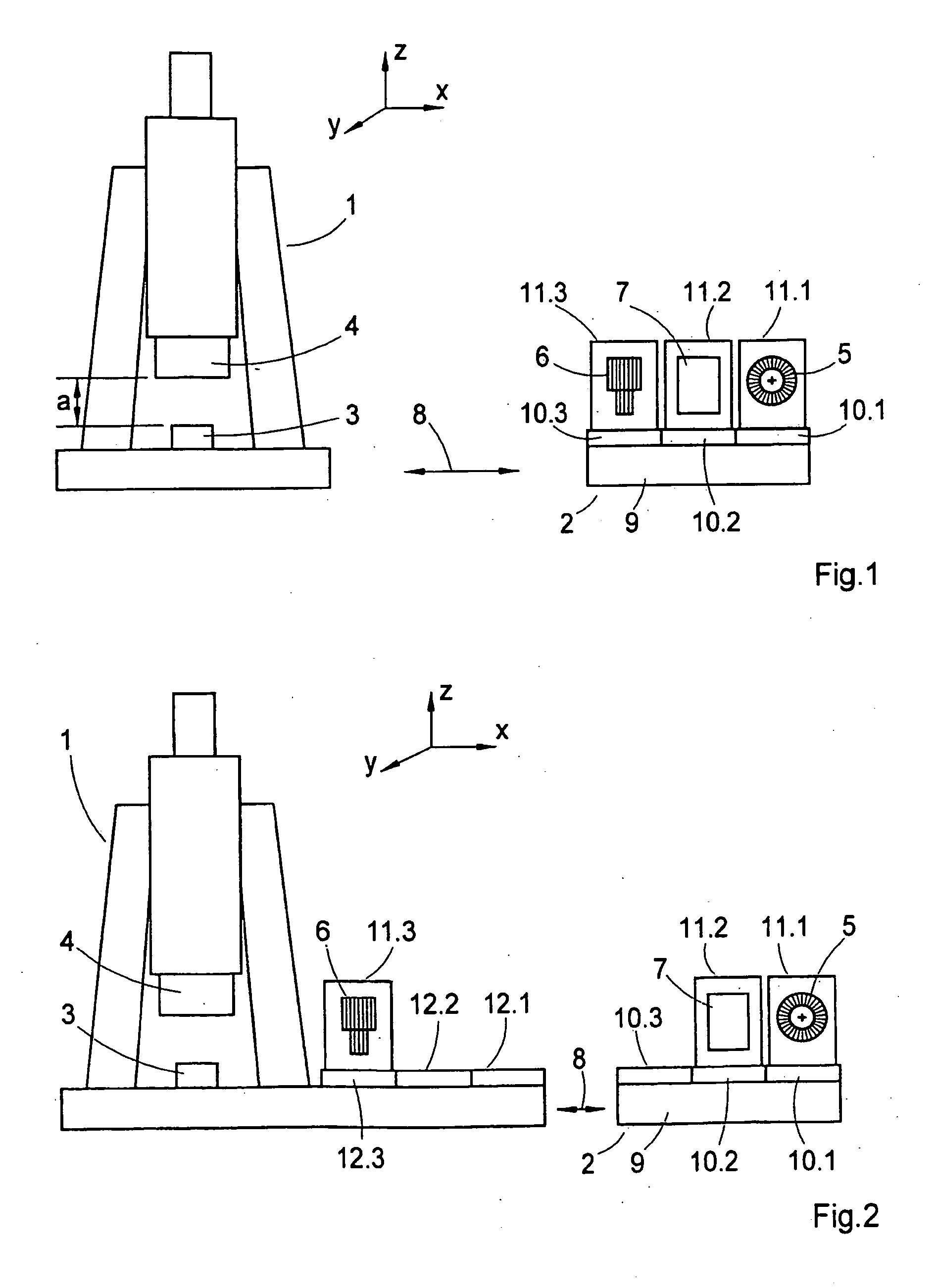Operating unit for optical imaging devices
a technology of optical imaging and operating unit, which is applied in the direction of optics, microscopes, instruments, etc., can solve the problems of operator-controlled elements, operator-controlled devices that do not provide feedback, and the complexity of apparatuses is relatively large, and achieve the effect of flexible use of imaging systems for operators
- Summary
- Abstract
- Description
- Claims
- Application Information
AI Technical Summary
Benefits of technology
Problems solved by technology
Method used
Image
Examples
Embodiment Construction
[0045]In FIG. 1, an imaging system in the form of a microscope 1 as well as a corresponding operator-controlled device 2 are shown. The schematic is simplified and serves to explain the functional principle.
[0046]The operator-controlled device 2 is provided for inputting adjustments which concern the imaging or viewing of an object 3. Such adjustments are to be undertaken at the microscope 1, for example, for focusing the image, changing the position of the object 3 relative to the objective 4 of the microscope 1 or also for adjusting the illuminating light emanating from an illuminating unit (not shown) and directed onto the object 3.
[0047]Operator-controlled elements are provided on the operator-controlled device 2 with which these adjustments can be inputted. Accordingly, for example, a rotation transducer 5 is provided with which the distance (a) between the object 3 and the objective 4 can be increased or decreased in the coordinate Z, that is, in the direction of the optical a...
PUM
 Login to View More
Login to View More Abstract
Description
Claims
Application Information
 Login to View More
Login to View More - R&D
- Intellectual Property
- Life Sciences
- Materials
- Tech Scout
- Unparalleled Data Quality
- Higher Quality Content
- 60% Fewer Hallucinations
Browse by: Latest US Patents, China's latest patents, Technical Efficacy Thesaurus, Application Domain, Technology Topic, Popular Technical Reports.
© 2025 PatSnap. All rights reserved.Legal|Privacy policy|Modern Slavery Act Transparency Statement|Sitemap|About US| Contact US: help@patsnap.com



